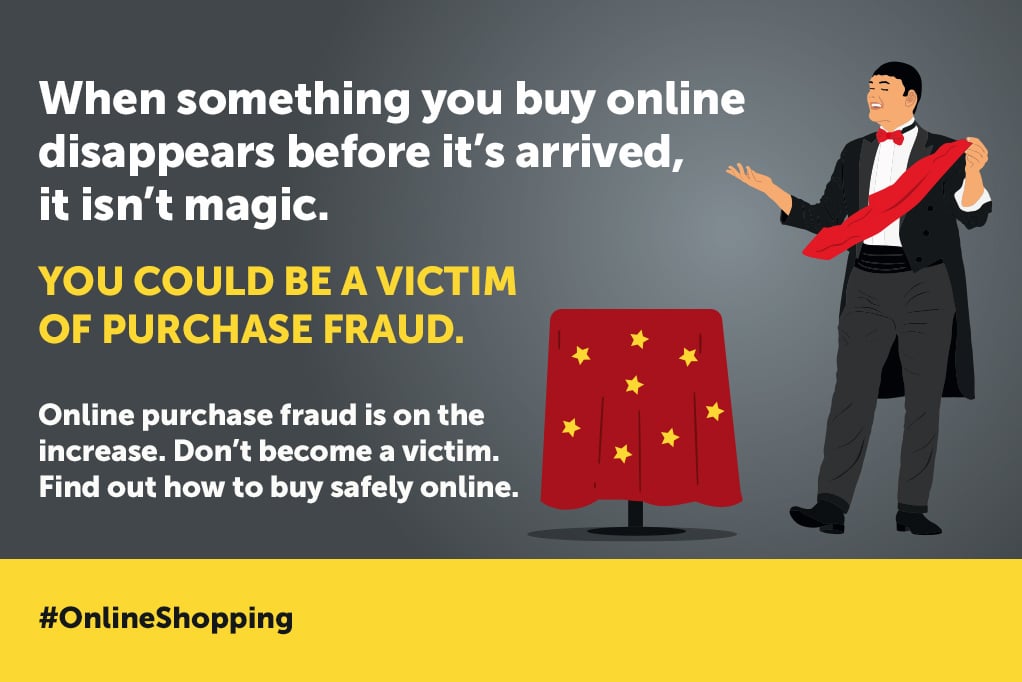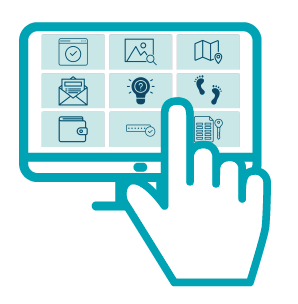Buying safely online

Purchase fraud: the great disappearing act
We all know or have heard about someone who’s bought clothes, an electronic product or even a car on the internet … only for it never to arrive. Sometimes it’s because of an admin error, but more often than not, they’ve been fooled by a fraudster. Maybe it’s even happened to you.
In the UK in 2023, there were 156,000 reported cases of people being defrauded whilst buying online, with losses totalling almost £90 million (source: UK Finance). That’s around a third more than in the previous year. But the actual figure is considerably higher, as most purchase frauds go unreported by their victims.
We can’t wave a magic wand, but here are our top tips on how to protect yourself
- Even if you’re desperate to buy something, don’t pay by transferring money directly to people or companies you don’t know, as you may lose it if it’s a scam. If you can, pay by credit card.
- A high proportion of fraud is committed by organised crime groups which operate as businesses, with the resources to set up fake websites and a social media presence that are very similar to the real thing. Make sure a website is authentic by carefully checking the address is spelled correctly. Ideally, type it in rather than clicking on a link in an email, text or post. Or go to www.getsafeonline.org/checkawebsite You can also find more fraud avoidance tools at www.getsafeonline.org/selfhelptoolcentre
- Learn how to spot fraudulent advertisements on social media, online marketplaces and forums. Regard unrealistically low-cost items with suspicion, but even normally priced items may also be fraudulent. Never part with payment – even a deposit – for goods you haven’t seen in person.
- Don’t click on links in emails, texts or posts that you’re not expecting, and don’t open unexpected email attachments. Try submitting potentially fraudulent texts, emails and web pages to Ask Silver www.ask-silver.com
- Make sure payment pages are secure by checking that addresses begin with ‘https’ (‘s’ is for secure) and there’s a closed padlock in the address bar. But remember: the https and closed padlock mean that the page is secure, but the site could still be operated by fraudsters.
- Don’t intentionally buy fake or counterfeit goods and do all you can to make sure brands you do buy are genuine. As well as being of inferior quality, contravening copyright and affecting livelihoods, they can be unsafe too.
- Read the small print and independent reviews for ‘low-cost’ or ‘free’ trials. Whatever the product or service, you could be signing up for large monthly direct debits which are hard to cancel. And if it’s for health remedies or slimming pills, check our advice on Buying Medicines on your Get Safe Online website.
- Texts and emails claiming to be from home delivery companies telling you that you owe a fee are also commonplace. Keep a record of everything you buy and, if it’s specified, which delivery firm the retailer is using.
- Do your research when it comes to pricing, especially during events like Black Friday and Christmas and New Year sales. Some sellers advertise products at a lower price when they’re actually no cheaper or even more expensive.
- Report fraud immediately to your bank: this will increase your chance of getting your money back. Also, report it to Action Fraud on 0300 123 20 40 or at www.actionfraud.police.uk In Scotland, report fraud to Police Scotland by calling 101.
#OnlineShopping

Back to Basics
We'll help you stay online with safety and confidence.

Monthly newsletter
Subscribe to PROTECT! for the latest news, views and advice.

Check a website
Determine whether a website is likely to be legitimate or a scam … before you visit it.

Neighbourhood Alert
Register to receive Neighbourhood Alerts.
Become a Get Safe Online Partner
Demonstrate your commitment to online safety and gain many exclusive benefits.

Self Help Tool Centre
FREE tools to help you keep safe when using the internet.

Is it a scam?
A simple way to check instantly if something you’ve received is a scam or not.

Spot the AI
We’ll help you learn to spot the difference between videos, voices and other content produced by AI, and the real thing.












































